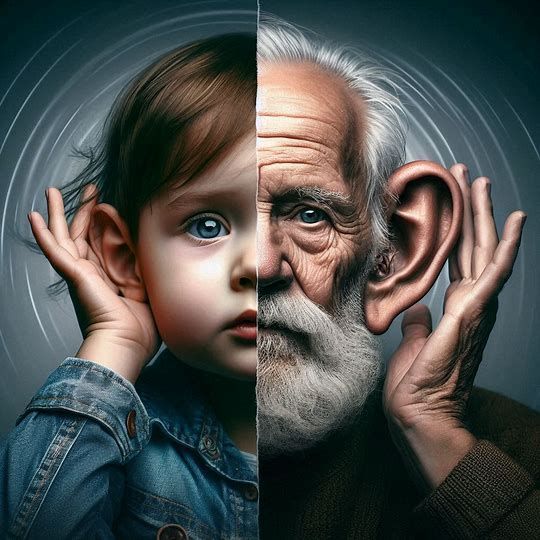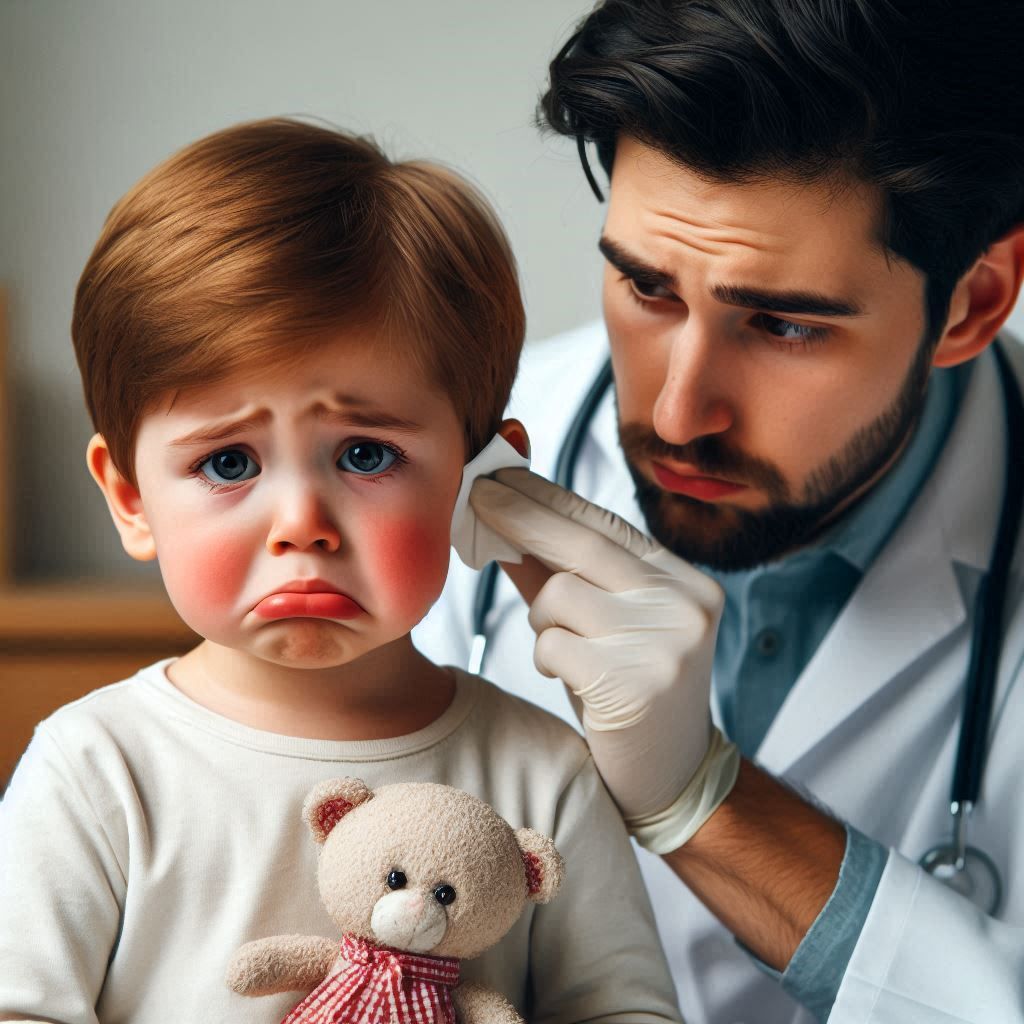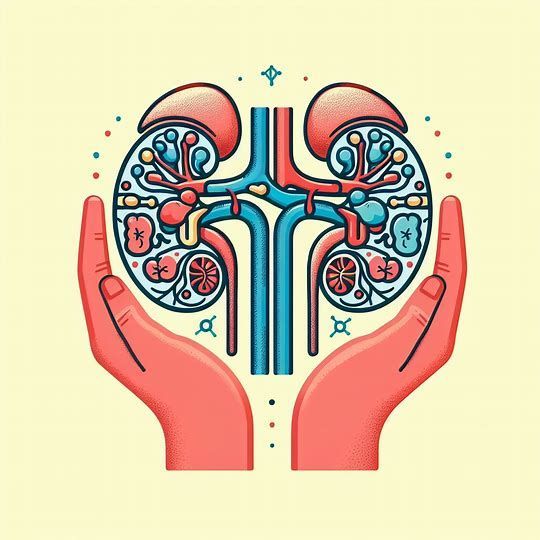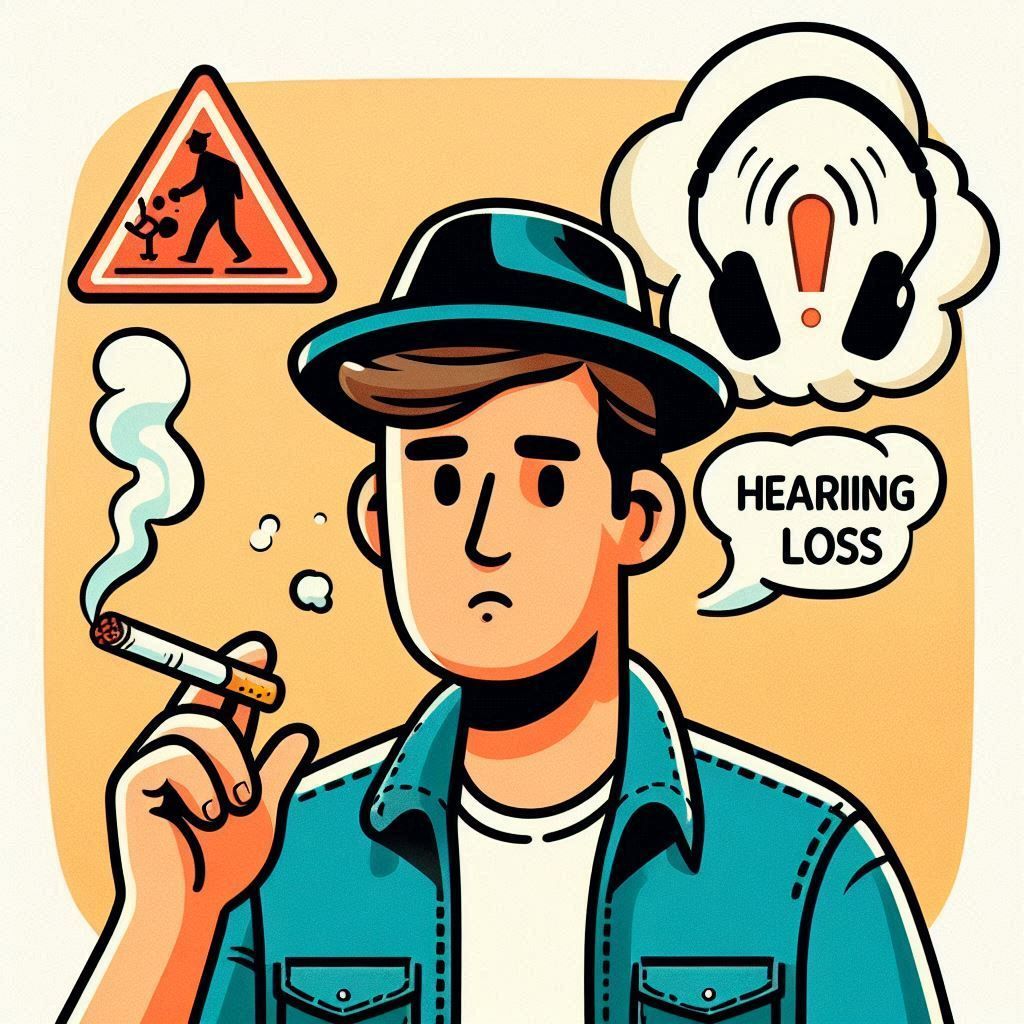Age

Hearing loss can occur at any age.
In children
- In Australia, 1-2 infants are born with a signficiant hearing loss and 3-4 children are identified with hearing loss by the time they come to school age
In adullts
- hearing loss due to aging is a common condition. It is called hearing presbycusis.
- Almost 1 in 2 adults over the age of 65 years experience some degree of hearing loss
- If not adddressed appropriately, presbycusis contributes to the acceleration of cognitive and physical decline in adults
Ear infections

Middle ear infections are very common in small children. Most infections tend to recover quickly without any issues.
Children with acute middle ear infection have ear pain and fever.
Glue ear is not an ear infection, but often follows when the ear infection is settled or with frequent ear infections. Glue ear can cause hearing loss and affect speech and language development in the short term.
Diabetes

- High blood glucose levels can cause damage to small blood vessels in the inner ear (similar to how diabetes damages vision and kidney function)
- Hearing loss is twice as common in diabetics
- Of those over 60 years of age with diabetes, 54% have hearing loss
- Adults with pre-diabetes have a 30 percent higher rate of hearing loss compared to those with normal blood sugar.
Kidney disease

The tissues of the inner ear and kidneys have similar structures and function.
Toxins accumulated with kidney failure can damage nerves – including those in the inner ear
As per 2022 statistics, 1% of Australian population (246,200) have chronic kidney disease (CKD). Prevalence of CKD increases with age and affects 44% of people above 75 years of age.
Diabetes is the leading cause of kidney disease.
Heart disease

Heart disease or cardivascular disease (CVD) occurs when blood vessels become blocked or narrowed.
CVD can reduce blood flow to the ear and in turn cause damage to different parts of the auditory system
The inner ear is so sensitive to blood flow that it is possible that abnormalities in the cardiovascular system could be noted in the ear earlier than in other less sensitive parts of the body.
Hearing loss is 54% more common in those with heart disease.
Thyroid disease

Ear development and function is dependent on thyroid hormones
Approximately half of people with hypothyroidism have hearing loss
Hypertension

Most hypertensive subjects with hearing loss have mild sensorineural hearing loss.
As blood pressure increases, hearing diminishes. Bringing blood pressure under control can restore hearing. Uncontrolled blooed pressure can cause permanent hearing loss
High blood pressure restricts blood flow to the inner ear and brain regions involved with hearing, accelerating age-related hearing loss.
High blood pressure can damage the lining of artery walls supporting the ears, leading to hearing loss and tinnitus.
As hearing declines with age, the average change in hearing thresholds per decade is significantly greater in those with high blood pressure as compared to normal hearing subjects.
Ototoxicity

Some drugs affect the inner ear resulting in hearing loss and loss of balance. Ototoxic drugs affect hearing and vestibulotoxic drugs affect balance.
Damage to the auditory system due to drugs can present in various ways: tinnitus, hearing loss, hyperacusis, aural fullness, dizziness, and vertigo.
Symptoms may range from temporary tinnitus to permanent deafness.
Known ototoxic drugs include:
- Aspirin (8-12 pills per day)
- Quinine
- Loop diuretics to treat kidney disease (Furosemide, ethacrynic acid, bumetanide)
- Certain high dose antibiotics (especially aminoglycosides, such as gentamycin, streptomycin and neomycin)
- Some anaesthetics
- Some anti-cancer treatments (cisplatin and carboplatin)
- Environmental chemical such as hexane (a solvent), mercury and carbon monoxide.
Infections
Infections such as meningitis and mumps can cause hearing loss.
Hearing loss is the most common after effect of bacterial meningitis. Hearing loss can range from a mild to profound degree in one or both ears.
Any one with a history of bacterial meningitis should have a hearing test within four weeks of being well enough to test.
Mumps is a viral infection that causes inflammatio of the inner ear and leads to sensorineural hearing loss.
Smoking

Smoking adversely affects heart heath and consequently can damage hearing
PersistentsSmokers are two times more likely to have hearing loss
Teens exposed to cigarette smoke are to two to three times as likely to develop hearing loss compared to those with little or no exposure,
46% of those exposed to second-hand smoke have hearing loss
Both nicotine and carbon monoxide
- lower oxygen blood levels and constrict blood vessels all over the body including those in the inner ear.
- interfere with neurotransmitters in the auditory nerve, which are responsible for telling the brain which sounds are heard
- irritate the Eustachian tube and lining of the middle ear.
- trigger the release of free radicals that can damage DNA and cause disease. This also makes one more sensitive to loud noises and therefore more susceptible to developing noise-induced hearing loss.
Dyslipidemia
Chronic dyslipidemia associated with elevated triglycerides may reduce auditory function
As hearing declines with age, the average change in hearing thresholds per decade is significantly greater in those with high cholesterol as compared to normal hearing subjects
Noise exposure

Noise-induced hearing loss happens when the delicate cells of inner ear are damaged due to exposure to loud sounds . The sound can be sudden, like an explosion, or can happen over a long period of time.
Hearing loss can be temporary or permanent, and can get worse over time. Permanent hearing loss can’t be cured.
Hearing loss is more likely to occur if a peson is exposed to both noise and ototoxic substances than to just one of them alone.
Sound is measured in units called decibels. Long or repeated exposure to sounds at or above 85 dBA can cause hearing loss. The louder the sound, the shorter the amount of time it takes for hearing loss to happen.
Head Trauma
There are two main ways that hearing can be affected after a head injury or concussion - mechanical damage or neurological damange.
If an injury affects the mechanical process of the ear, such as fracture or dislocation of middle ear bones, perforation of ear drum or fracture of inner ear, the transmission of sound from ear to brain is affected. This is the most common cause of hearing loss after head injury. This can also affect balance.
If the parts of the brain that process hearing become damaged, the brain can no longer process sound. Thus, even if the ear functions normally, the patient can experience hearing difficulties.
Genetics
Genetics plays a very important role in hearing loss.
Genetic hearing loss can be either syndromic (i.e., associated with other medical conditions) or non-syndromic (occurring alone and not associated with other medical conditions).
For example, otosclerosis is a non-syndromic condition that causes hearing loss.
Some examples of syndromic hearing loss include Usher's syndrome (affecting both hearing and vision) or Pendred syndrome (involving thyroid and balance).
Age related hearing loss can be influenced by genetic factors.
Congenital hearing loss in infants can be associated with genetic factors.
